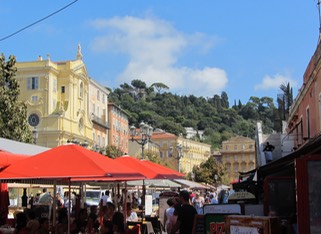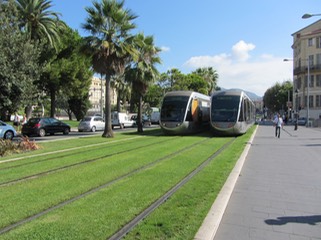It is easy to overlook Nice en route to the Cote d’Azur. The city’s port, airport and rail links now represent the main international arrival points for a large number of sheik destinations from Cannes, to Monaco.

This stretch of the French Riviera has long been appreciated for its balmy climate and clear skies and became extremely popular in the 18th century for both tourism and astronomy. The latter resulted in a very special commission for two of France’s best-known architects. Charles Garnier and Gustave Eiffel joined forces in 1881 to build the Observatoire de Nice on Mont Gros which for a time was a unique world class facility.
The Promenade des Anglais was built to accommodate huge volumes of winter tourists from Victorian England. This wide waterfront follows the beach along the full length of the Bay of Angels, and allows Nice to promote a most irregular green ‘transfer’ option for air travellers. It may be ‘tongue-in-cheek’ but suggestions that the fit can easily walk - or cycle - from the Airport to the City Centre at least offer an interim alternative until the proposed East-West Tram-line is built connecting the Port, the Old Town and the Airport.

Construction work for the new Line is due to commence in 2013 and reach completion in 2016. It should be easy to add rail lines along the virtually flat waterfront but as usual with prestigious infrastructure projects a more ambitious route is planned. The proposal adopted involves building underground sections with subterranean stations to avoid detrimental effects on historic areas, existing roads and key buildings.
Nice comprises a patchwork of distinct sectors. Furthest east the picturesque deep water port at Villefranche has colourful apartments and hillside houses perched above a fisherman’s quay. Across the tree covered Mont Boron the Port of Nice has tall Italianate facades and civic buildings around the rectangular harbour basin. This area feels compact and tightly contained by its topography. Further West the high rocky outcrop at Colline du Chateau provides a lush backdrop and visually separates the Port from the Bay of Angels.

The connurbation further west was originally divided by the River Paillon which is now enclosed in a tunnel within the city boundaries. The resulting Place Massena now makes it easy to move between modern Nice and the Old Town linking logically via Jardin Albert I to the waterfront. This could make an excellent uncomplicated route for the proposed airport link, and could integrate with the first phase tram-line already built and opened in 2007.
Fears that Nice is moving towards a tram debacle are quelled locally by the success of the first line. It is well used, convenient and attractive. The rails run across manicured lawns near public gardens and trains cross the length of Place Massena without unsightly overhead cables.
In Nice there is no doubt that the initial line has given the public huge enthusiasm for trams. Assuming the next phase can be delivered successfully it will transform the Riviera traffic environment and perhaps reduce congestion among joggers and walkers making their way to and from the airport.
[517 words]